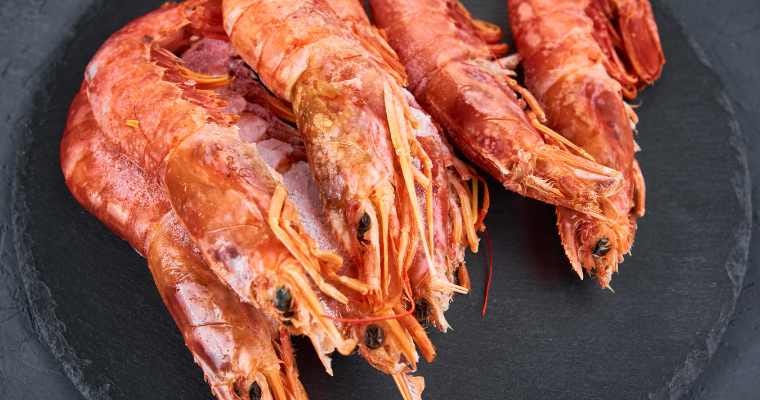The word “chagara” might conjure up different images depending on your background. In some parts of the world, it refers to a delicious freshwater crustacean, while in others, it’s a vibrant textile steeped in tradition. Today, we embark on a journey to explore both meanings of “chagaras,” uncovering their unique characteristics and significance.
Part 1: A Bite of the Tropics – The Chagara Crustacean
In the crystal-clear rivers and streams of Puerto Rico and other Caribbean islands, thrives a hidden gem – the chagara. This delectable crustacean goes by various names, including shrimp, prawn, or crayfish, depending on the specific species.
Subheading: A Local Favorite
For generations, Caribbean communities have enjoyed chagaras as a prized catch. Local fishermen use traditional techniques to harvest these freshwater dwellers, ensuring a sustainable source of food.
Subheading: Culinary Delights
Chagaras boast a sweet, delicate flavor that shines in various culinary applications. Here are some popular ways to enjoy them:
- Boiled: A simple yet satisfying method, boiled chagaras are often served with a tangy dipping sauce, highlighting their natural sweetness.
- In Soups: Adding chagaras to seafood soups or stews elevates the dish with their rich and complex taste.
Nutritional Value: Chagaras are a low-fat, high-protein food source, offering essential vitamins and minerals. They are a great addition to a balanced diet.
Part 2: A Tapestry of Tradition – The Chagara Textile
Across the vast expanse of South America, particularly in Ecuador and Colombia, lies another facet of the “chagara” story. Here, it refers to a stunning textile, woven with meticulous care and imbued with cultural significance.
Subheading: The Art of Chaguar
The process is a testament to human ingenuity and artistic expression.
- Spinning the Yarn: The extracted fibers are deftly spun into fine threads using a hand spindle.
- The Weaving Process: Skilled artisans employ backstrap looms to weave the yarn into intricate patterns, often incorporating vibrant dyes.
Symbolism and Significance:
Chaguar textiles are not merely decorative pieces; they hold deep cultural meaning. The intricate patterns and symbols woven into the fabric often represent:
- Nature and the Environment
- Ancestral Stories and Myths
- Community Identity
Each chaguar textile is a unique masterpiece, taking months, sometimes even years, to complete.
Part 3: Chagaras: A Tale of Two Worlds
The word “chagara” bridges the gap between the natural world and human creativity. In the Caribbean, it represents a gift from the freshwater ecosystems, while in South America, it embodies a vibrant cultural expression.
A Table for Comparison: Chagara the Crustacean vs. Chaguar the Textile
| Feature | Chagara (Crustacean) | Chaguar (Textile) |
|---|---|---|
| Origin | Caribbean Islands (Puerto Rico etc.) | South America (Ecuador, Colombia) |
| Material | Freshwater creature | Fibers of the chaguar plant |
| Purpose | Food source | Clothing, decoration, cultural expression |
| Significance | Local delicacy | Symbol of heritage and tradition |
drive_spreadsheetExport to Sheets
FAQs about Chagaras
- Can I find chagaras (crustacean) outside the Caribbean?
Fresh chagaras might be difficult to find outside their native habitat. However, some Caribbean restaurants might offer frozen or pre-cooked options.
- Are chaguar textiles available for purchase?
Yes, chaguar textiles can be found in specialty stores or directly from artisans in South America. They are often considered collector’s items due to the time and skill involved in their creation.
- How can I learn more about chaguar weaving techniques?
Several documentaries and online resources showcase the traditional methods of chaguar weaving. Additionally, visiting cultural centers in Ecuador and Colombia can provide firsthand experience with this remarkable art form.
Conclusion
The word “chagara” offers a glimpse into the rich tapestry of our world. It reminds us of the bounty nature provides and the enduring power of human creativity in transforming raw materials into stunning works of art and sustenance.
Beyond the Duality: The story of chagaras goes beyond the duality of food and textile. It highlights the importance of respecting and utilizing natural resources responsibly, as seen in the sustainable fishing practices for chagaras (crustacean) and the use of readily available plant fibers for chaguar textiles.
A Call to Action: Learning about chagaras can inspire us to appreciate the diverse cultures and traditions around the world. Perhaps it might spark an interest in exploring local, sustainable food sources or ignite a passion for supporting traditional crafts. Whether it’s savoring a plate of chagaras or admiring the intricate patterns on a chaguar textile, let this word be a reminder of the interconnectedness of our planet and the beauty that emerges when nature and human ingenuity collide.

